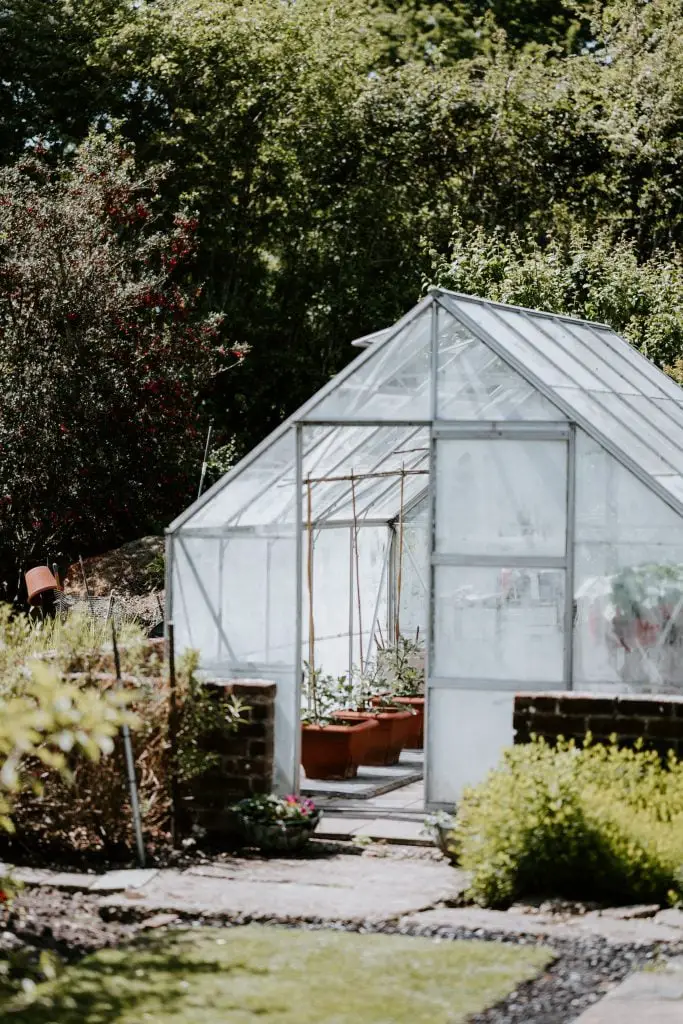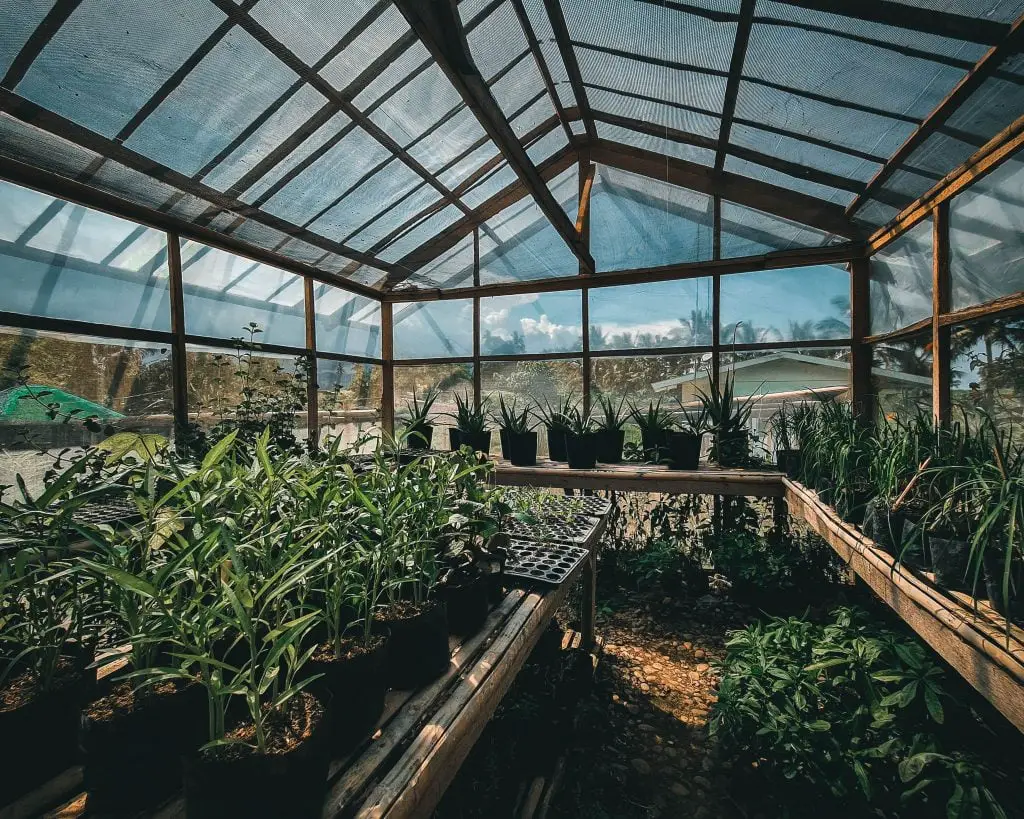How Much Warmer Is An Unheated Greenhouse? For those living in challenging climates, a Greenhouse can be an indispensable tool to help plants survive the winter, get seedlings started earlier in the growing season, and even grow a few vegetables in the winter. But how much warmer is the air and soil in a Greenhouse really?
The difference in temperature inside a Greenhouse that is unheated compared to outside can be up to 30˚F. The extent of this variation depends greatly upon the type of Greenhouse and the degree of insulation. A single layer Greenhouse often will show around a 5 to 10˚F difference and a double layer is around 9 to 14˚F degrees higher.
These figures are based on a small test conducted by Chelsea Green Publishing in a 17 feet by 36 feet (5.2m by 11.0m) Greenhouse where the ambient temperatures varied between -8˚F to 2˚F. Obviously, there is a large number of factors that could affect the extent of the difference.
However, it is apparent that even a temperature difference at the lower end of the range can be significant particularly in the early part of the growing season as the weather is beginning to warm up. This allows the seedlings to be started a few weeks earlier which can make a big difference to garden output.
When considering the purchase of a Greenhouse the other important consideration is ventilation. The temperature within a Greenhouse can increase rapidly on sunny days in Summer rendering the Greenhouse unusable in the Summer months. To avoid this make sure that there are several ventilation panels in the roof and sides of the structure.

What Temperature Should A Greenhouse Be In Winter?
Temperatures in a Greenhouse should ideally be as warm as possible. However, when keeping frost-sensitive plants in the Greenhouse the minimum temperature you should be aiming for is around 37˚F (3˚C). At this temperature, the Greenhouse will remain frost-free. But, many tender plants like Citrus trees, for example, are much happier if the temperature is more like 45˚F (7˚C).
As the majority of the heat loss occurs through the windows of the Greenhouse the most important thing to reduce this heat loss by insulating the walls. Irrespective of whether you have a single, double, or even triple layered Green additional layers will help.
The most effective material for this job is bubble wrap because it is clear, light, low cost, and has excellent thermal properties. The air in the bubbles within the film help to slow the rate of heat transfer significantly. It can be purchased from a number of different retailers, click here to see the current price on Amazon.
When attaching the bubble wrap to the inside of your greenhouse it is best to use clips designed specifically for the purpose, such as Creative-Idea 50 Set Greenhouse Support Clips. These are clips that are designed to fit the grooved tracks of aluminum greenhouses making them quick and easy to install. Click here to see the latest price on Amazon.
If your greenhouse does not have grooved tracks it may necessary to use adhesive tape to attach the insulation to the roof and walls of the greenhouse. When doing this you must use freezer tape for this purpose because the adhesives on normal packaging tape will not adhere well due to the cold temperatures.
Additionally, when insulating your greenhouse you may want to consider using Double Bubble Reflective Foil Insulation on the north wall of the Greenhouse (assuming you are living in the northern hemisphere). The benefit of using this material is it will not only insulate the wall but also retain the sunlight in the greenhouse for longer by reflecting it back through the Greenhouse for a second time. This increases the degree of heat retention within the Greenhouse.
The second key strategy that will help retain heat is to increase the thermal mass within the Greenhouse. Large objects such as brick walls and rocks can be used to increase the temperature in the Greenhouse at night. These objects absorb heat during the day from the sun and then release the energy into the surrounding environment at night. This increases the minimum by as much as 3˚F according to some academic studies.

The passive heating elements can be incorporated into the design of the Greenhouse in a number of different ways. These include erecting the Greenhouse on a concrete slab, using a lean-to Greenhouse up against a brick wall, or constructing the lower part of the Greenhouse walls from stone or brick.
However, if none of these options are available to you or you already having existing Greenhouse steel drums or carboys painted black and filled with water can be placed into the Greenhouse. If you are struggling for space in the Greenhouse steel drums can be used as legs to support benches to minimize the usage of space.
How To Heat Your Greenhouse In Winter?
If after applying insulation and passive heating measures the temperature within your Greenhouse continues to fall below the desired level external heating may be required. There are many heating units available on the market however, it is important to select one that will resist the humid environments of the Greenhouse to ensure it lasts a long time.
Additionally, it critical to have a thermostat to control when the heater turns on to avoid the temperatures falling below 37˚F (3˚C) and off when it is sufficiently warm to reduce the running costs of the heater. Many of the heaters available advertise an in-built Thermostat. These are generally controlled by a dial that does not allow a specific temperature to be set.
To be able to control the temperature reliably and accurately to a specific temperature it is necessary to purchase both a heater and thermostat. When selecting components it is important to ensure that they are specifically designed for use in the Greenhouse as it is a moist environment where water is used.
The unit consider most suitable for this application is the Palma Greenhouse Heater and Digital Thermostat which is available as a package deal containing both the heater and thermostat unit available on Amazon, see image below.

We recommend this units because the heater has stainless steel housing and heating elements to resist rusting. Additionally the bearings within the heating unit are specifically designed to cope with humid environments.
The Thermostat unit is also splash proof which makes it ideal for use in a Greenhouse. Additionally, the thermostat unit has an external sensor cable to measure the ambient temperature that can positioned separate from the Thermostat to ensure the best possible temperature reading. The unit also has a digital display that can be set from 0˚F to 90˚F depending upon your requirements.
The heater is capable of heating Greenhouse that is around 120 sqft (12 sqm) which is a common size of many home Greenhouses.
